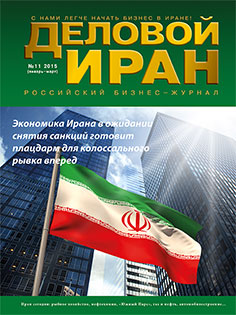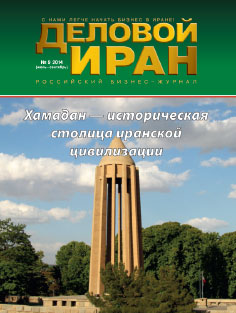MOLECULAR LAYERING
|
Continued complementary metal-oxide-semiconductor (CMOS) scaling beyond 65 nm technology node requires high-K gate dielectrics to achieve small equivalent oxide thickness (EOT) while maintain low gate leakage current. HfO2 and others thin films are currently of great interest due to their potential application as high-dielectric constant (K) materials in future CMOS devices. The replacement of SiO2 with a high K gate dielectric material constitutes a formidable challenge to the semiconductor industry. Molecular Layering (ML) - Atomic layer deposition (ALD) method is the first candidate to replace conventional technology. On the other hand future DRAM designs may use capacitors made from long narrow holes with high aspect ratios in place of conventional flat surface capacitors. Molecular Layering (ML) - Atomic layer deposition (ALD) is an ideal method for depositing highly conformal films and it offers the additional benefit of smooth films, precise thickness control and precise composition control. It was thought that integration of low- K dielectrics was much more likely than the use of copper metallization. The semiconductor manufacturing processes appears to undergo fundamental changes at present with the introduction of new materials, which are supposed to form the basis for many technology generations in the future. However, while the interconnect metal has been chosen (copper), it is not clear yet which material will be used finally as intermetal dielectric. This chip generation will operate with a dielectric with K < 3. The search for suitable materials with a dielectric constant of K=2,5 continues with unrelenting urgency, as the advancement of the integration density appears to accelerate. Molecular Layering (ML) - Atomic layer deposition (ALD) method is the first candidate to replace conventional technology of SiO2. Other application of ML-ALD nanotechnology is the microchannel plates (MCP) amplifiers. MCP is a specially fabricated plate that amplifies electron signal similar to secondary electron multiplier (SEM). Unlike SEM, MCP has several million independent channels and each channel works as independent electron multiplier. In other words, one can imagine MCP as an assembly of millions miniature SEMs. MCP consists of a two-dimensional periodic array of very-small diameter glass capillaries (channels) fused together and sliced in a thin plate. A single incident particle (ion, electron, photon etc.) enters a channel and emits an electron from the channel wall. Secondary electrons are accelerated by an electric field developed by a voltage applied across the both ends of the MCP. The microchannel plate is an open multiplier intended for registration of particles and radiations. MCPs represent 0.4-3.0 mm thick plates of round or rectangular shape. They have a honeycomb structure and contain in one square centimeter up to one million of separate channels of 5-15 mm diameter. In addition to design simplicity, small dimensions and absence of external voltage divider, MCPs feature high time and spatial resolution capability. The length of the channel of a MCP is virtually its thickness. The ratio of the channel length (L) to the channel diameter (d) L/d, as well as the inherent secondary emission factor of the channel wall material determines the gain of the MCP. The standard MCPs are fabricated with a L/d ratio about 40 to 80. There are high aspect ratios of channels in the MCP like in DRAM capacitors. The main problem is to cover inner surface of channels by thin uniform layer of composite film. ML-ALD is a unique nanotechnology to meet this requirement. Molecular Layering (ML) - Atomic layer deposition (ALD) method was invented in St.-Petersburg (Leningrad) in the middle of 60-s. The ML-ALD method consists of successive deposition of a number of monolayers of specified composition on a suitable substrate (matrix) by irreversible chemical adsorption of the corresponding molecules. These molecules react only with the substrate and not with ach other; entering the composition of the substrate, they form various structural units with the underlaying monolayer. In general, conditions for irreversible chemical adsorption, such as a large excess of reagent and flow conditions, ensure 100% surface coverage in each synthesis step. More than one monolayer cannot be obtained at each step because, as stated above, the sorbate molecules do not interact with each other. Thus, direct synthesis of solids with its sometimes very drastic conditions, determined by the thermodynamics of the process, is replaced by a stepwise process, involving a definite succession of steps of irreversible chemical adsorption. The chemical energy of this exothermic process is employed for forced distribution of the structural units in a definite manner over the solid surface. The great advantage of this method is that it can be used at comparatively low temperatures and pressures, in any event, at temperatures and pressures much lower then the equilibrium values foe direct synthesis or dissociation of the corresponding solids. At the same time we have developed both scientific and technological foundations of the ML-ALD method. In particular, there are original acting automatized equipments for preparing multilayer (laminating) dielectric and semiconductor films by ML-ALD in our laboratory, which was developed and constructed in SPbSU. Our developments yields to no foreign analogues in their own parameters but exceed some operation parameters. In accordance with Critical technology table of Russian Federation (Russian road map of technology) we will solve the problem to establish patented production equipment of deep submicron technology process for multifunction claster systems of a new generation mini-plants (plants of XXI age) on the base of ML-ALD ideas with collaboration and on request of Russian advanced Companies such as “Angstrem” company. Taking into account high level of prices for such kind of equipment we propose limit of budget for the project of $2,0 -2,5 millions. On the base of our scientific and technical experience we intend to produce a new kind of mini-plant for IC (Integrated Circuits) producing in the continuous (uninterrupted) process, the main part of technological operations should be in ML-ALD mode. This equipment must be completed partly by standard details, but in main part should consist of original made details and processes. This project is free of risks practically because of its’ well known target and the way to fulfill that plan. List of publications. 1. V.E.Drozd, ML-ALD-ALE Synthesis of Low Dimensional SnSe Structures International Conference “ALD2003”, Seoul, Korea. 2. V.E.Drozd; ML-ALE-ALD Growth of CdTe Films., International Conference “ALD2003”,Seoul, Korea, 2003. 3. V.E.Drozd, A.M.Yafyasov, I.O.Nikiforova, V.B.Bogevolnov, I.V.Murin., Growth of CdTe thin films by ML-ALD method., International Conference “ALD2004”, Helsinki, Finland, 2004. 4. V.E.Drozd, A.M.Yafyasov, I.O.Nikiforova, V.B.Bogevolnov, ML-ALD synthesis of SnSe nanoparticles. International Conference “ALD2004”, Helsinki, Finland, 2003. 5. V.E.Drozd, A.P.Baraban, I.O.Nikiforova, Electrical properties of Si-Al2O3 structures grown by ML-ALE. Appl. Surf. Science, v.83, p.583, (1994) 6. V.E.Drozd, A.P.Baraban, I.O.Nikiforova, V.B.Aleskovski, Synthesis and investigation of heterooxides by ML-ALE method. Appl. Surf. Science, v.112, p.264 (1997) 7. A.A.Tulub, V.E.Drozd, D.V.Korol'kov, Synthesis of conducting oxides conducting oxides by ML-ALE. Appl. Surf. Science, v.83, p.587, (1994) 8. V.E.Drozd, V.B.Aleskovski, N.N. Kopilov .The electrical field effect on the growth of titanium oxide layers by ML-ALE. Appl. Surf. Science, v.112, p.258 (1997)
|

 Загрузить PDF-версию № 11
Загрузить PDF-версию № 11
 Загрузить PDF-версию № 10
Загрузить PDF-версию № 10
 Загрузить PDF-версию № 9
Загрузить PDF-версию № 9